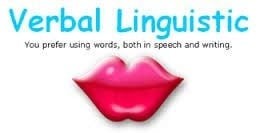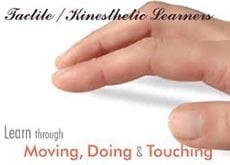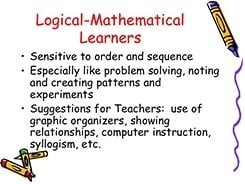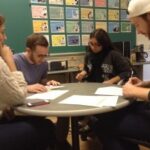Understanding how you learn is the first step to unlocking your full academic potential. Everyone absorbs and processes information differently, meaning that study methods are not one-size-fits-all. Identifying your personal learning style allows you to tailor your study habits for maximum effectiveness and academic success.
Take a Learning Style Inventory Test.
Once you’ve taken a learning style assessment and have a better understanding of your preferences, explore the sections below to discover targeted strategies to enhance your learning experience.
If you are a Verbal Learner, words are your forte. You excel at reading, writing, and expressing yourself through language.
If you are a Spatial-Visual Learner, images, diagrams, and visual representations are key to your understanding.
If you are an Aural (Auditory-Musical) Learner, sound and music resonate with you and play a significant role in how you learn best.
If you are a Kinesthetic (Physical) Learner, learning by doing, moving, and hands-on experiences is your preferred method.
If you are a Logical (Mathematical) Learner, systems, reasoning, and logical frameworks are the pathways to your comprehension.
If you are a Social (Interpersonal) Learner, collaboration and group interaction amplify your learning process.
If you are a Solitary (Intrapersonal) Learner, independent study and introspection are where you thrive academically.
Verbal Learners
A verbal learner effectively uses words, both in speech and writing, to understand and remember information.
Verbal learners, also known as linguistic learners, have a natural affinity for language. They learn best through words, whether spoken or written. To optimize your study sessions, verbal learners should incorporate the following techniques:
- Talk it Out: Verbalizing concepts is a powerful tool. Explain study material aloud, as if you are teaching it to someone else. This active recall method reinforces understanding and identifies areas needing further clarification.
- Read Aloud Dynamically: When reviewing notes or textbooks, read important sections aloud with expression. Vary your tone and pace to maintain engagement and memory retention. Avoid monotonous reading, which can hinder focus.
- Create Verbal Connections: Develop rhymes, rhythms, or word associations to link concepts and facts. This can make abstract ideas more memorable and accessible.
- Utilize Mnemonics: Employ mnemonic devices to remember lists, sequences, or complex information. Acronyms, acrostics, and rhymes can transform challenging material into easily recalled phrases.
Example Mnemonics:
- To remember the order of operations in mathematics: Please Excuse My Dear Aunt Sally (Parentheses, Exponents, Multiplication, Division, Addition, Subtraction).
- For the planets in our solar system: My Very Educated Mother Just Served Us Noodles (Mercury, Venus, Earth, Mars, Jupiter, Saturn, Uranus, Neptune).
Spatial-Visual Learners
| >Spatial-visual learners excel when information is presented visually, using images, diagrams, and spatial understanding. |
Spatial-visual learners, or visual learners, process information most effectively when it’s presented in a visual format. They think in pictures and benefit greatly from visual aids. If you are a spatial-visual learner, consider these strategies:
- Visualize with Diagrams: Transform notes and textbook material into visual diagrams, such as charts, mind maps, flowcharts, and concept maps. Use colors, symbols, and images to represent information. Consider replacing words with pictures in your diagrams to further enhance visual encoding.
- Harness Visual Resources: Actively seek out pictures and videos related to your study topics. Online image searches, educational videos, and documentaries can provide visual context and strengthen your understanding. Connect these visuals directly with your notes and textbook readings.
- Doodle and Draw: Embrace drawing and doodling while listening to lectures or reading. Visual learners often retain information better when they are engaged in visual activities simultaneously. Doodling can help maintain focus and create visual associations with the material.
Aural (Auditory-Musical) Learners
| >Aural learners learn through listening and sound, often finding music and rhythm helpful in memorization and understanding. |
Aural learners, also known as auditory or musical learners, learn best through sound and music. They have a strong sense of rhythm and often respond well to auditory cues. Here are effective study techniques for aural learners:
- Musical Mnemonics: Create songs, jingles, or rhythmic patterns to memorize information. Setting information to music can make it more engaging and easier to recall.
- Sound-Based Associations: Use music and sounds to create auditory “visuals” of the material you are studying. For example, when studying a historical period, listen to music from that era to associate events with the soundscape of the time.
- Music for Mood and Focus: Utilize music strategically to enhance your study environment. Play energizing music before study sessions to boost motivation, or use calming instrumental music to promote focus and reduce distractions during study time.
- Emotional Anchoring with Music: Associate specific emotional states with particular pieces of music during study. Later, when facing a test or needing to recall information under pressure, recalling that music can help you access the associated state of mind and improve recall without needing the music to be playing.
Kinesthetic (Physical) Learners
Kinesthetic learners learn best through physical activity, movement, and hands-on experiences.
Kinesthetic learners, or tactile learners, learn through physical movement and touch. They are “hands-on” learners who need to be physically active to stay engaged and absorb information effectively. Try these methods:
- Movement and Exercise: Incorporate movement into your study routine. Pace while reviewing notes, stand up and stretch between study intervals, or even study while walking on a treadmill (if feasible). Physical activity can help kinesthetic learners process information and maintain focus.
- Active Creation: Engage in hands-on activities related to your study material. Draw diagrams and charts yourself instead of just looking at them. The physical act of creating and manipulating study aids enhances retention.
- Tactile Tools: Use physical objects and tactile tools while studying. Squeeze a stress ball, use flashcards (which you can move and sort), or build models to represent concepts. Manipulating physical objects can improve understanding and memory for kinesthetic learners.
- Breaks and Relaxation: Incorporate regular breaks with physical activity and relaxation techniques into your study schedule. Breathing exercises and stretching can be particularly beneficial for kinesthetic learners to manage energy levels and reduce study-related stress.
Logical (Mathematical) Learners
| >Logical learners thrive on systems, reasoning, and understanding the underlying logic of information. |
Logical learners, also known as mathematical learners, excel at reasoning, logic, and systematic thinking. They learn best when they can see patterns, understand systems, and approach information in a structured, analytical way. Adopt these study strategies:
- Understand, Don’t Just Memorize: Focus on comprehending the meaning and underlying logic of your notes and textbook material, rather than rote memorization. Ask “why” and “how” questions to deepen your understanding.
- Connect the Dots: Actively seek connections and relationships between different topics and concepts. Determine how different pieces of information relate to each other and fit into a larger framework. This holistic approach strengthens logical understanding.
- Systematize Your Learning: Develop systems and frameworks to organize study material. Break down complex topics into smaller, manageable parts. Create outlines, hierarchical structures, or flowcharts to visualize the logical flow of information. When studying history, for example, analyze the cause-and-effect relationships between events.
- Avoid Over-Analysis: While logical analysis is a strength, avoid getting bogged down in excessive detail or overthinking. Over-analysis can sometimes lead to paralysis and hinder your ability to study effectively. Strive for a balance between thorough understanding and efficient progress.
Social (Interpersonal) Learners
| >Social learners learn best through interaction, discussion, and collaboration with others. |
Social learners, or interpersonal learners, thrive in collaborative environments. They learn best by interacting with others, discussing ideas, and working in groups. If you are a social learner, maximize your learning through:
- Form Study Groups: Organize regular study groups with classmates who share your academic motivation. Collaborative learning allows for the exchange of ideas, diverse perspectives, and mutual support.
- Share and Compare Notes: Review and share class notes with study group members. You can fill in any gaps in your notes and gain different interpretations of the material.
- Teach Each Other: Take turns teaching different topics to your study group. Teaching material is one of the most effective ways to solidify your own understanding. Prepare to explain concepts clearly and answer questions from your peers.
Solitary (Intrapersonal) Learners
Solitary learners prefer to learn independently, focusing on self-reflection and personal study environments.
Solitary learners, or intrapersonal learners, learn best when working alone. They are introspective and prefer quiet, independent study environments. If you are a solitary learner, enhance your study sessions by:
- Set Personal Study Goals: Establish clear, achievable goals for each study session. Decide how many pages you will read, notes you will review, or problems you will solve before taking a break. This structured approach helps solitary learners stay focused and motivated.
- Cultivate Personal Interest: Connect with your study material on a personal level. Explore aspects of the content that genuinely interest you. Ask yourself questions about the material, its relevance, and its presentation. For example, consider why the textbook is structured in a particular way.
- Identify and Address Knowledge Gaps: As you study independently, keep track of areas where you lack clarity. Write down specific questions or points of confusion. Seek clarification from your professor or a tutor during office hours or scheduled appointments to address these individual learning needs.
By understanding your dominant learning style and implementing these tailored strategies, you can transform your study habits, improve your learning effectiveness, and achieve greater academic success. Experiment with different techniques to discover the perfect blend that maximizes your individual learning potential.





